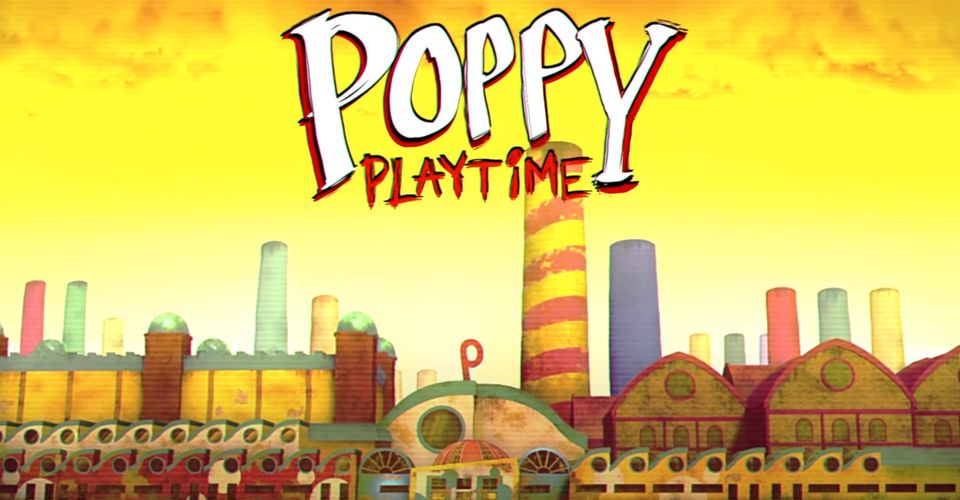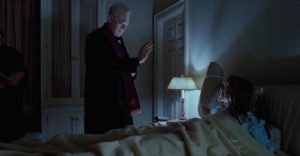Why Poppy Playtime’s Unused Portraits May Have Been Removed

Poppy Playtime is one of the most popular indie horror games released last year, but unused assets buried within the game make its mysteries even deeper. While most of these out-of-bounds details seem to have been cut for creative or gameplay reasons, a series of unused portraits have been discovered. These are presumably of the Playtime Co. employees, hidden underneath the hallway between the Security office and the Gift Shop.
As an ex-employee of Playtime Co., Poppy Playtime players return to the factory 10 years after the mysterious disappearance of the entire staff caused it to shut down. However, according to a letter and VHS tape the player receives at the beginning of the game, the Playtime Co. employees never actually left the factory and are still trapped inside. Of course, as players explore the abandoned facility, it quickly becomes clear that the staff may have met a more sinister fate as the vengeful toys inside come to life and attack the player.
Using hacks to travel outside the game’s map, YouTuber Shesez uncovered details hidden within the game that didn’t end up making the final cut. The unused portraits of Poppy Playtime’s missing employees were likely going to be displayed in the hallway of the factory’s lobby based on their out-of-bounds location just beneath the floor of this area. However, the faces of each portrait are completely scratched out with red and blue crayon or marker as well, suggesting the gruesome fate of the employees they’re meant to depict. While these environmental details seem pivotal to the overall plot of the game, there are a few reasons why MOB Games may have removed them before publishing the final cut of Poppy Playtime.
Why Poppy Playtime’s Employee Portraits Were Removed

The unused portraits hidden under the lobby in Poppy Playtime were likely removed as a creative decision to improve the game’s pacing and storytelling. While the scratched-out portraits are an interesting detail that could potentially increase the scare factor in the opening section of the game, they don’t really add anything that the player wouldn’t have already learned from reading the opening letter. It’s possible that the developers removed these pictures in favor of the posters depicting the Playtime Co. toys, which may incorporate more subtle lore that will be important in later chapters.
Poppy Playtime excels at environmental storytelling, setting up many of its most intriguing mysteries through little details in the posters and other assets used throughout the game. The posters currently hanging in the lobby’s halls depict the supposed villain Poppy herself, as well as Bron, the health-conscious dinosaur who, according to his poster, recommends a diet of 4,000 calories per day. Of course, 4,000 daily calories is significantly higher than the amount typically recommended for children, and this type of high intake is more commonly seen among weight lifters and bodybuilders attempting to bulk up. However, this subtle detail may actually point to the deeper lore hidden within Poppy Playtime, making Bron’s poster a much more interesting asset than the unused portraits.
What Was The True Purpose Of Poppy Playtime’s Orphan Program?

While Chapter One of Poppy Playtime only gave players their first glimpse into the horrors of the Playtime Co. Toy Factory, there’s a notable detail buried in the game’s trailer about the sinister experiments being conducted within the facility. Not much is currently known about these experiments, but many players speculate that these affronts to science were Playtime Co.’s attempts to create lifelike toys by literally producing living, breathing toys with organic qualities. Based on the events of Chapter One, which depict Huggy Wuggy breathing, bleeding, and following players with a pair of human eyes hidden in his toy eyes, it seems that Playtime Co. managed to accomplish their goal. Poppy herself is also shown to bleed and has lifelike human eyes complete with capillaries in the trailers for the game, which all but confirms that she was Playtime Co.’s first successful living doll.
According to the scrolling text that appears in the background of the trailer for Poppy Playtime, the “experiments” that were being created in the facility not only have functioning organs and digestive tracts but need to consume very large portions in order to survive. Apparently, the only experiment that did not need to eat is the mysterious Experiment 1006, which is the prototype that seems to be responsible for the incident that led to the disappearance of the factory’s staff 10 years ago. The toys’ voracious appetites can even be seen in-game as Huggy Wuggy himself seems to devour the player if he manages to catch them. While this detail about the Playtime Co. experiments is horrific enough in and of itself, it also puts a more malevolent spin on the calorie recommendation listed on Bron’s poster in the factory’s lobby.
In addition to creating the world’s most lifelike toys, Playtime Co. prides itself on its childcare services in Poppy Playtime. Between the factory tours advertised at the beginning and the Playtime Co. Foster and Adoptive Care Initiative depicted on the poster in the Make-A-Friend room, it seems that the company invested heavily in programs that encouraged children to visit the factory. A lot of players speculate that the Adoptive Care Initiative was intended to lure orphaned children to the factory in order to turn them into toys as part of Playtime Co.’s experiments, but it’s possible that the company was actually feeding these children to the experiments to provide them with enough sustenance to survive. This would certainly provide an explanation for the extremely high-calorie recommendation that appears on Bron’s poster, which would encourage the children to eat enough to become a more substantial snack for Playtime Co.’s abominations.
While this subtle detail in the opening section of Poppy Playtime may go unnoticed by many players, it’s possible that Bron’s poster was the developer’s way of subtly incorporating the game’s lore into its environment. The worldbuilding of Poppy Playtime is incredibly deep, especially considering that only the first short chapter of the game is available to play. Whether Bron’s calorie recommendation has a more sinister intent or is simply meant to be a funny detail, this poster in the lobby adds a lot of depth to the game, whereas the unused portraits beneath the floor would have only confirmed something that the player already knew. Still, the amount of attention to detail that went into the production of Poppy Playtime shines through in every aspect of the game, including the models that went unused in the end.
Source: Shesez
About The Author

















